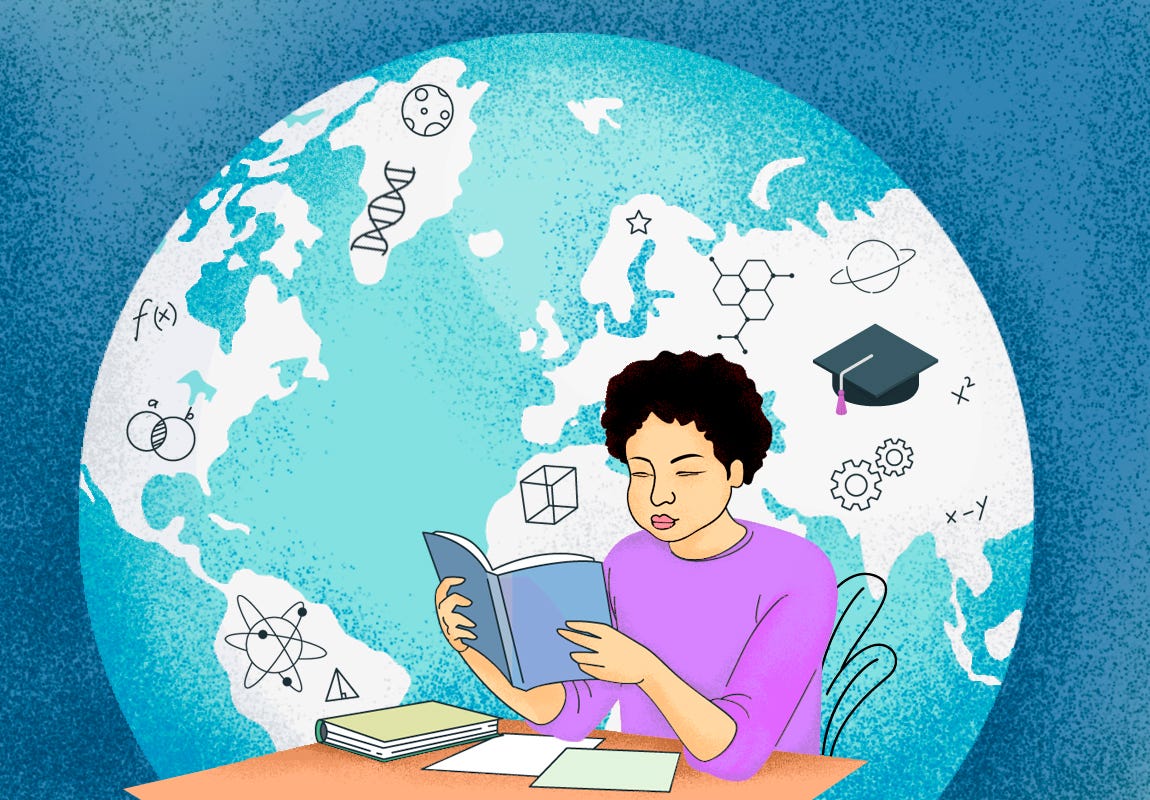Role of education
In a hierarchical and stratified society like India, the primary school emerges as a progressive institution that questions status by ascription or accidents of birth and promotes status by achievement, according to Amarjeet Sinha. The inability to provide quality primary education to all children, irrespective of their class or caste can promote elitism and inequality. A common school system can reduce economic disparities and social inequalities. Amarjeet Sinha also suggested an example – education enables a sweeper’s daughter to become something else than a sweeper.
According to Sveta Dave Chakravarty, growth in the education system in India has not been accompanied by the democratisation of education. Government-led initiatives assume that the same content delivered in the same way will result in a uniform achievement throughout the country. Without strategies and ideologies to deal with the existing diversity, such initiatives, even if they are good, will not get the necessary reach. According to Sveta Dave Chakravarty, a plurality of strategies must be promoted in order to address the needs of a diverse population.
Centralised policy vs decentralisation
Sveta Dave Chakravarty in her article Multicultural Education in India says that there are two main issues in the education system that should be addressed right away. First one, how can the educators make sure that the value systems and voices of ‘other’ groups are included in the system of education. Two, how can culturally relevant education be planned for each group. When we try to address these two issues, other questions pop up: In a global environment, can a cultural world remain closed? If not, what kind of balance is needed, and how can it be achieved?
The education policies over time have focussed on making education accessible to diverse groups. However, multi-cultural education was not a term used in these policies. When curriculum tried to incorporate all kinds of diversities, it resulted in an information overload, and that is where the concept of universal design becomes important.
Concept of universal design
The concept of universal design was primarily developed for the inclusion of technology-based solutions towards making the curriculum accessible to differently abled learners. However, educational theorists concluded that this concept could also be used to address the need for a common curriculum broad enough to serve diverse populations.
According to Raymond Orkwis and Kathleen McLane, universal design means the design of instructional materials and activities where the learning goals are achievable by individuals with wide disparities in their abilities to see, hear, speak, move, read, write, understand English, and to attend, organise, engage, and remember.
An inclusive curriculum does not mean that it should be loaded with many cultural worlds that make up the multi-cultural population of India. Instead, the curriculum needs flexibility, so that it can be tailored to the needs of the group it serves as well as the mode of delivery. Contents and its representation, and students’ engagement with it should be flexible in order for the principle of universal design to serve its purpose of universal accessibility.
In teacher training programmes, quality must be ensured in terms of state-of-the-art methods, innovative proven technologies as well as in terms of the relevance of the content to the context the teacher will serve.
In case of textbooks, they should be consistent in approach and method, clear in presentation, motivating for students, and can be used with ease by less qualified teachers. Also, the textbooks should allow good teachers to expand on them. Both content and approach should be relevant to the culture they address. The decisions concerning the content and medium of textbooks should be decentralised to the context they are to serve.
Multi-cultural education views the school as a social system that consists of highly interrelated parts and variables.
In teacher training programmes, quality must be ensured in terms of state-of-the-art methods, innovative proven technologies as well as in terms of the relevance of the content to the context the teacher will serve. Archaic practices like memorisation rather than discussion and insufficient ongoing monitoring and assessment will hamper student learning. Hence an effective teaching framework includes practical methods for covering each subject, adapting the curriculum to the social and physical environment of the pupil, understanding how the children learn, evaluating teaching and learning, managing classrooms, and building effective teacher-parent and community relations. For the training to lead to any substantial improvement, guidelines for follow-up and feedback need to be institutionalised. Training programmes should be designed by taking into account local conditions as well. Training with onsite follow-up is a significant step towards effective teaching.
Multi-cultural education views the school as a social system that consists of highly interrelated parts and variables. To transform the education sector, we should ensure that parts of the system are developed together to work in tandem. Therefore, the programmes for reforming education system should include a relevant curriculum, structured learning materials, need-based teacher training, appropriate teacher-learning processes, a supportive environment and adequate infrastructure.
Dealing with multi-culturalism in the Indian context is not easy as the diversity in cultures is huge. There is a need for a coherent ideology that recognises the value of diversity and the role of education in realising the ideals of cultural pluralism. Addressing the problem of disparities in the educational system in a fragmented way will not be of much help. According to Dave, an integrated plan to harness the richness of pluralistic development is important, and the policy makers should be aware of the fact that it is important to keep the diversity alive.
Now put on your thinking hats and think about the following questions for a couple of minutes.
How would you describe the concept of “universal design” to your students?
Can you think of the reasons why it is important to keep the diversity alive?
Write down your thoughts and discuss them with your students, children and your colleagues. Listen to their views and compare them with your own. As you listen to others, note how similar or different your views are to others’.
Thank you for listening. Subscribe to The Scando Review on thescandoreview.com.
Happy Teaching!













Multi-cultural education in India